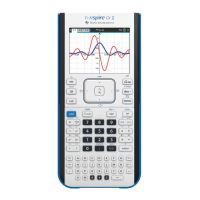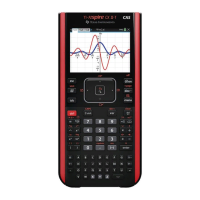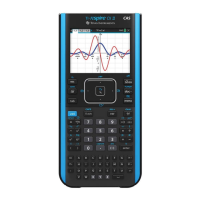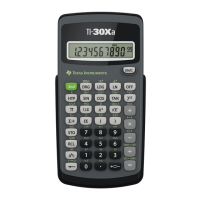58 Using Calculator
Rules for naming variables
Note: In the unlikely event that you create a variable with the same
name as one used for statistical analysis or by the Finance Solver, an error
condition could occur. If you begin entering a variable name that is
already in use in the current problem, the software shows the entry in
bold to let you know.
• Variable names must be in one of the forms xxx or xxx.yyy. The xxx
part can have 1 to 16 characters. The yyy part, if used, can have 1 to
15 characters. If you use the xxx.yyy form, both xxx and yyy are
required; you cannot start or end a variable name with a period “.”
• Characters can consist of letters, digits, and the underscore character
(_). Letters can be U.S. or Greek letters (but not Π or p), accented
letters, and international letters.
• You can use uppercase or lowercase letters. The names AB22, Ab22,
aB22, and ab22 all refer to the same variable.
• You cannot use a digit as the first character of xxx or yyy.
• Do not use spaces.
• If you want a variable to be treated as a complex number, use an
underscore as the last character of the name.
• If you want a variable to be treated as a type of unit (such as _m or
_ft), use an underscore as the first character of the name. You cannot
use subsequent underscores in the name.
• You cannot use a preassigned variable, function, or command name,
such as Ans,
min, or tan.
Note: For a complete list of TI-Nspire™ functions, refer to the
Reference Guide.
• Library documents and library objects are subject to additional
naming restrictions. For details, see the “Libraries” section of the
documentation.
Here are some examples:
Variable names Valid?
Myvar, my.var Yes
My var, list 1 No. Contains a space.
a, b, c Yes
Log, Ans No. Preassigned to a system function or variable.
Log1, list1.a, list1.b Yes

